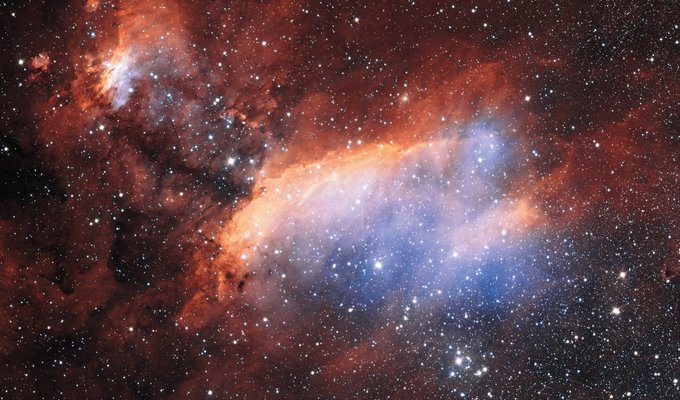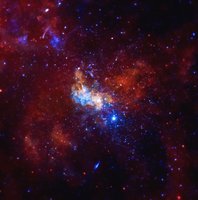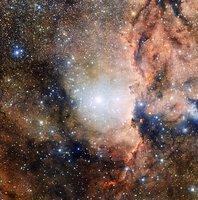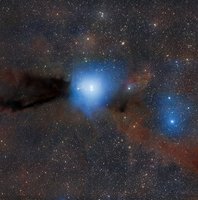The Prawn Nebula appears very faint in light that can be seen by the naked eye. So, to make this photograph so eye-catching, the colours collected by the telescope were brightened.

This photograph shows the Prawn Nebula. You can see hundreds of blue stars dotted across this picture, sparkling among the colourful swirls of gas. The colours make it look a little like a prawn swimming in the sea.
But how do we know which stars are part of the nebula, which lie in front of it and which are behind it? Measuring how far away cosmic objects are is a very tricky business. Luckily for us, astronomers are a very smart bunch of people, and they've come up with a number of solutions! Thanks to these, we know that most of the bright blue stars in this picture belong to one star cluster that lies much closer to us than the nebula.
Once we know the distance to an object, working out its size is much easier. The Prawn Nebula is so big that it would take 250 years for light to travel from one end to the other—and light travels faster than anything else in the Universe! The nebula covers four times as much of the night sky as the full Moon!
But despite its enormous size, most people don't pay that much attention to it. It's nothing personal though; it's just that the Prawn Nebula is very faint. The nebula glows because of the light from its neighbours. The neighbouring star cluster shines ultra-violet light, which cannot be seen by human eyes. This very powerful light is what makes the Prawn Nebula glow.




















